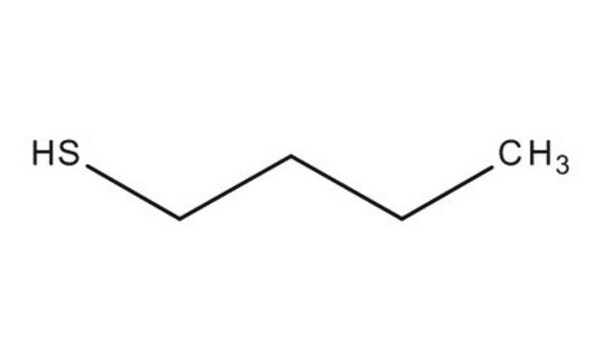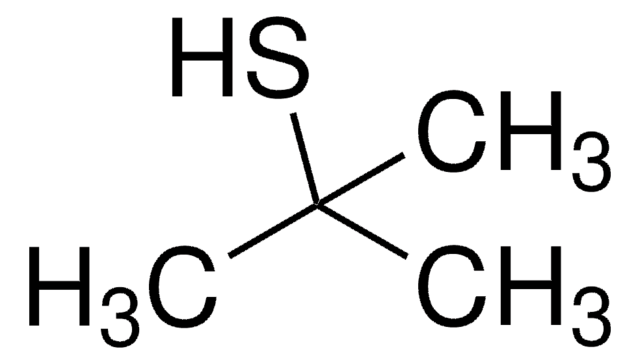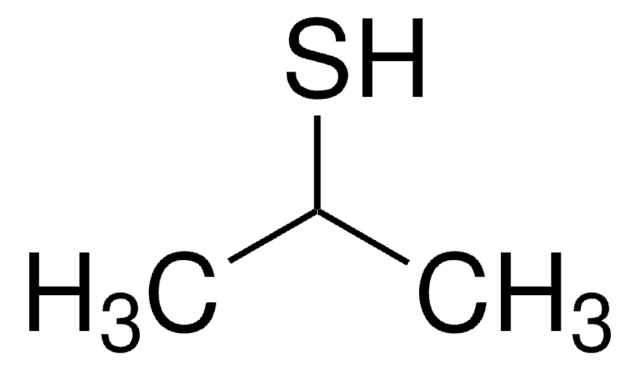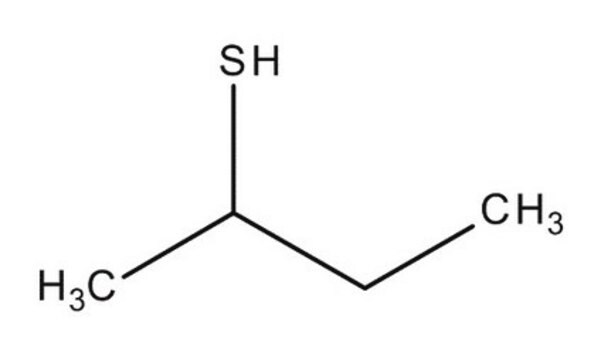112925
1-Butanethiol
99%
Sinônimo(s):
Butyl mercaptan, Mercaptan C4
About This Item
Produtos recomendados
densidade de vapor
3.1 (vs air)
Nível de qualidade
pressão de vapor
83 mmHg ( 37.7 °C)
Ensaio
99%
índice de refração
n20/D 1.443 (lit.)
p.e.
98 °C (lit.)
pf
−116 °C (lit.)
densidade
0.842 g/mL at 25 °C (lit.)
grupo funcional
thiol
cadeia de caracteres SMILES
CCCCS
InChI
1S/C4H10S/c1-2-3-4-5/h5H,2-4H2,1H3
chave InChI
WQAQPCDUOCURKW-UHFFFAOYSA-N
Procurando produtos similares? Visita Guia de comparação de produtos
Aplicação
Palavra indicadora
Danger
Frases de perigo
Declarações de precaução
Classificações de perigo
Acute Tox. 4 Inhalation - Acute Tox. 4 Oral - Eye Irrit. 2 - Flam. Liq. 2 - Skin Irrit. 2 - Skin Sens. 1 - STOT SE 3
Órgãos-alvo
Respiratory system
Código de classe de armazenamento
3 - Flammable liquids
Classe de risco de água (WGK)
WGK 3
Ponto de fulgor (°F)
53.6 °F - closed cup
Ponto de fulgor (°C)
12 °C - closed cup
Equipamento de proteção individual
Eyeshields, Faceshields, Gloves, type ABEK (EN14387) respirator filter
Escolha uma das versões mais recentes:
Já possui este produto?
Encontre a documentação dos produtos que você adquiriu recentemente na biblioteca de documentos.
Os clientes também visualizaram
Artigos
Self-assembled monolayers (SAMs) have attracted enormous interest for a wide variety of applications in micro- and nano-technology. In this article, we compare the benefits of three different classes of SAM systems (alkylthiolates on gold.
Nossa equipe de cientistas tem experiência em todas as áreas de pesquisa, incluindo Life Sciences, ciência de materiais, síntese química, cromatografia, química analítica e muitas outras.
Entre em contato com a assistência técnica











